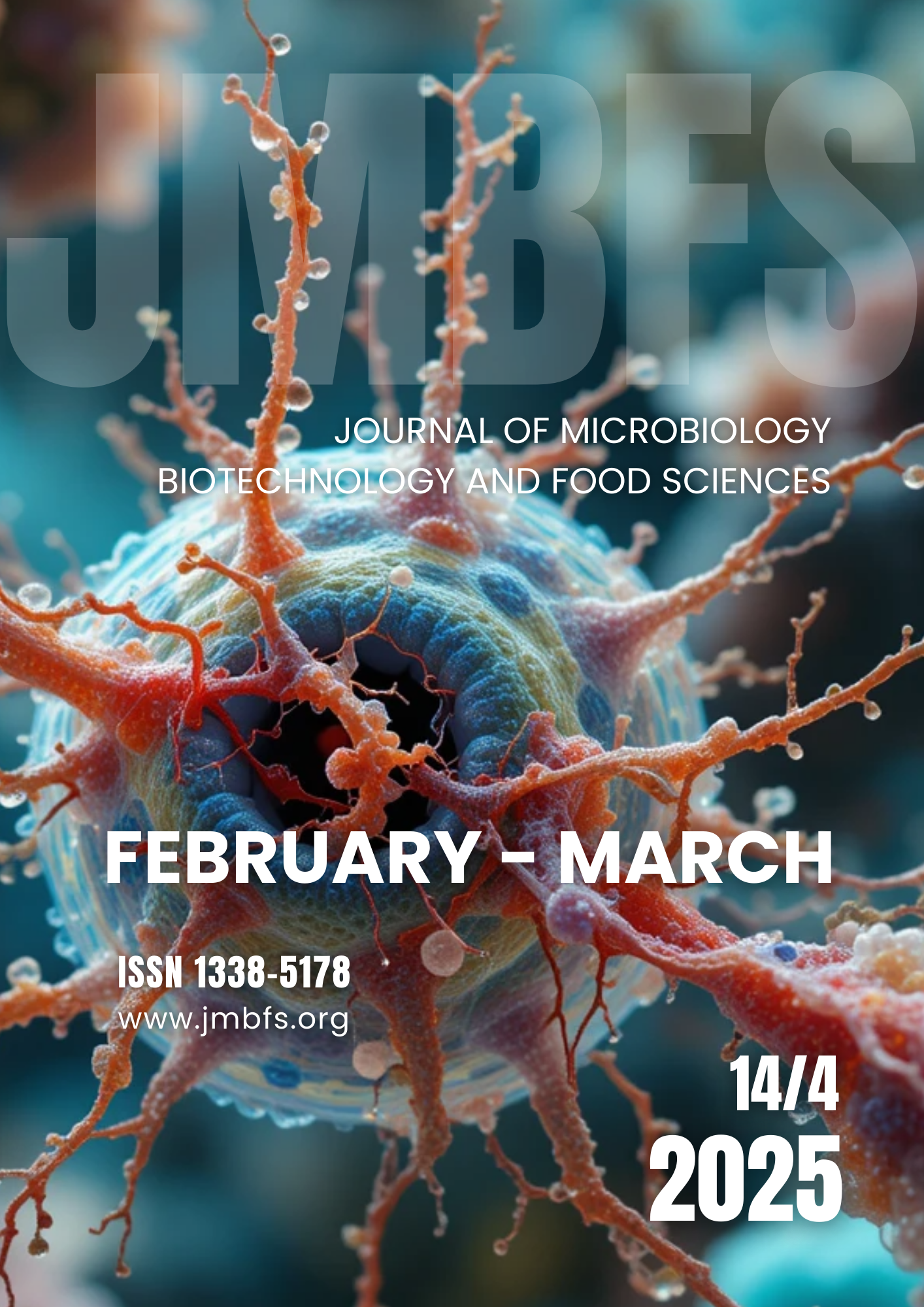DEVELOPMENT OF EDIBLE FILMS CONTAINING ARONIA (Aronia melanocarpa) AND PROBIOTIC
DOI:
https://doi.org/10.55251/jmbfs.11152Keywords:
Antimicrobial, Aronia, Edible film, Extract, Food spoilage, Limosilactobacillus fermentum, ProbioticAbstract
The application of herbal extracts and probiotics to edible films has the potential to improve food safety. This study aims to investigate the usage possibility of food packaging film prepared by combining aronia fruit ethanol extract (AEE) and probiotic candidate strain Limosilactobacillus fermentum MA-7 in the food industry. Firstly, the antimicrobial activity of AEE was determined. The extract showed antimicrobial activities against all tested microorganisms except Listeria monocytogenes ATCC 7644. Minimum inhibitory concentration (MIC) and minimal bactericidal or fungicidal (MBC or MFC) concentration values of the extract against test microorganisms were determined between 12.5 mg/mL and 50 mg/mL. Secondly, inhibitory activity of AEE on lactic acid bacteria (LAB) strains from human milk was determined. Then, the antimicrobial activity of the films obtained by adding AEE (10%) or L. fermentum MA-7 separately or together was determined. The results showed that the AEE and probiotic mixture showed a synergistic effect and the highest antimicrobial activity was determined to be in the Gum-Extract-Probiotic (GEP) group. The thickness, density, moisture content, transparency, swelling degree, water solubility and light transmittance of the developed edible film were also determined. The mechanical properties of the films have improved the quality in food applications and prevented food spoilage. The GEP group extended the shelf life of its fruits by reducing mass loss by 35.88% at +4°C and 40.96% at +25°C compared to the control. The developed film can be used as bioactive antimicrobial food packaging as an alternative to synthetic packaging in the food industry.
Downloads
Downloads
Published
How to Cite
Issue
Section
License
Copyright (c) 2023 Ali SAGLAM, Meltem ASAN-OZUSAGLAM

This work is licensed under a Creative Commons Attribution 4.0 International License.
All papers published in the Journal of Microbiology, Biotechnology and Food Sciences are published under a CC-BY licence (CC-BY 4.0). Published materials can be shared (copy and redistribute the material in any medium or format) and adapted (remix, transform, and build upon the material for any purpose, even commercially) with specifying the author(s).





